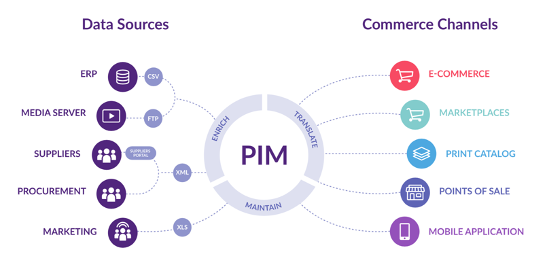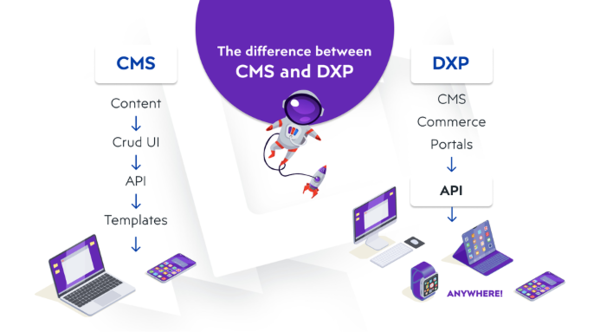There are several reasons why you might need to migrate from Magento to an alternative solution. First of all, let’s not forget, it is the cost, a great obstacle unfortunately for many companies. It is true that the expense depends a lot on the type of product chosen. Magento Open Source is technically free but does not include development costs, design, maintenance, security, hosting and so on. If you switch to a different product, such as Magento Commerce, the costs rise to up to $125,000 a year.
The choice must depend on the size of the business of the company itself which choices to adopt Magento. To be more precise it depends on the average value of the store order and the annual revenue. In conclusion, Magento can safely declare itself an "expensive platform".
Magento offers the opportunity to create anything a company wants. But this results in slowness. A large number of features, plugins, extensions can in fact slow down the performance of the website developed directly on Magento.
Surely you can optimize the entire site but it could prove to be an extremely impactful task in terms of time and resources.
We remind you that the response rate of a website can determine the conversion rate, reducing it in case of slowdowns of more than 2%.
Since June 2020, Magento has stated that it no longer provides any support on the Magento 1 version of the platform. This news has alarmed all the companies that used just that version putting them in front of the choice almost obliged to upgrade to Magento 2. But it’s not a simple passage, in fact. There’s a good deal of difference between one version and another. This translates, somewhat like website optimization, into the use of time and resources that not all companies can afford.
To date, there are about 200,000 eCommerce powered by Magento 1 that are still without support. Why not consider moving on to an alternative solution?
The comparison between Pimcore and Magento could be considered a clash between giants in the field of online business platforms!
Pimcore is an open-source digital experience platform, with built-in data management and customer experience management capabilities, capable of creating virtually everything a company needs to meet its customers' needs.
Here is a small comparison between Magento and Pimcore on topics such as:
Magento 2 is generally a secure platform. It supports advanced built-in security options, including SHA-256 (Secure Hash Algorithm 256), which override any attack attempts. Compared to Magento 1, Magento 2 has made a big leap towards greater safety. Magento’s security team has removed dozens of potential vulnerabilities such as remote code execution and information loss.
But despite these updates, there is still a lot to do if you want to ensure the safety of your website.
How safe is Pimcore?
Pimcore takes security very seriously. Structured on a very sophisticated database, able to deter any attacker. Interesting to mention is the fact that Pimcore is not an out-of-the-box solution. And the definition of security settings is provided by the basic framework from the start.
Both platforms are very often used for eCommerce purposes. But which of the two offers the best customization capabilities?
Magento 2 has a number of options. It allows you to segment customers based on their buying and browsing behaviour. Then, after configuring the rules for distributing personalized content to segmented customers, you can create the content that will be correctly distributed. In addition to personalized content with Magento, you can: create custom banners, show related products, define customized discounts on different products in the online store.
It is also possible to classify the warehouse by product groups, segment customers by demographic data, make a clear distinction between new and existing customers, keep track of the items that customers are looking for and more.
All in all, Magento provides a good amount of customization options.
But…
Pimcore has more than that.
Pimcore’s customization engine is one of the most powerful aspects of the entire platform. You can customize just about anything.
It allows you to create different target groups and customer segments, in which target groups refer to all visitors to the website.
Very importantly, visitors do not have to be registered or make a purchase, to live a personalized digital experience.
And if registered users visit the site, there are dozens of triggers for the automation of the customer, conditions and actions to configure, to make their experience truly unforgettable.
In short, with Pimcore customization you can set any kind of rule you want, both for all visitors, specific customer segments, interest groups, and so on.
And unlike Magento - you can customize every part of the website - from the products shown on the homepage, to the recommended products on the product page, images and videos on different pages, and much more.
In conclusion, Pimcore’s customization capabilities easily exceed Magento’s capabilities. And marketers have everything they need to provide an exceptional experience for every single user.
Speaking of marketing, how are these platforms compared to SEO?
SEO is one of the main concerns for a large number of Magento users. Although it is practically SEO friendly there are still many things that can be improved.
For example, one of Magento’s biggest problems with SEO is duplicate pages. This problem often occurs due to the filter and selection of products, pagination, variants of the same product and even the same products in different categories.
In addition, Magento 2 does not support automatic creation of HTML sitemaps by default. To solve this problem, you need to implement some of the extensions.
But in general, Magento does a good job regarding SEO.
Regularly, we advise you to optimize the images of the product, edit the file
How much is SEO friendly Pimcore?
Pimcore comes with a dashboard completely dedicated to SEO, which allows you to edit all items without the use of third-party plugins.
Each document (page) can be highly optimized for SEO through its SEO document editor. In addition, you can edit all the metadata for images, videos and other types of resources. So to answer the question - Pimcore is more SEO-friendly than Magento? It depends.
Both platforms are highly SEO-friendly, but Magento brings along some known issues with respect to SEO.
All these problems can be solved over time, but if you want to go with a completely SEO-friendly solution from the start, Pimcore is the right choice.
Pimcore comes with 3 different subscription options.
The first, Community Edition, is free.
With this free edition of Pimcore, you can experience all Pimcore modules, and support unlimited amounts of data, users and entities.
The other two modes - Enterprise Subscription and Unlimited Subscription are available with a Price, paid in Annual Subscription.
If you choose a paid edition, it includes long-term support from Pimcore, a number of business extensions, and an SLA agreement (service level).
In addition, payment plans include exclusive training to prepare developers to deal with all situations and issues that may occur on the platform.
If you choose a Community Edition, you can still feel safe knowing that the Pimcore team or partners around the world will provide you with all the support you need.
All in all, the Pimcore license is free and there are no hidden fees. Development, design, hosting and similar costs are excluded.
The short answer is "yes".
Pimcore has several high-quality modules dedicated to data management.
For example, the digital resource management module allows you to manage all digital resources, such as images, videos and so on. You can edit all the data associated with digital resources with just a few clicks.
The product information management module (PIM) is the core of Pimcore.
With a PIM solution, marketers will immediately enjoy the benefits it will bring in data management and will be able to improve the quality and accuracy of the data of their products. This will quickly lead to creating and providing engaging buying experiences.

When it comes to data management, Pimcore provides the MDM (master data management) module that allows you to control all data and collect it in a single source - often called the only source of truth (SSOT Single source of truth).
And when we say all the data - we mean everything from product data to supplier data.
If you love data, you’ll love Pimcore.
On the other hand, Magento offers a number of data management options. It also has the ability to gather data at a central point, models it and governs it. Just like Pimcore, Magento gives you the ability to access and analyze your data wherever you are - all you need at the bottom is Internet access.
Cloud-based data reporting technology has strongly entered the industry and has now become a standard for high-quality platforms such as Pimcore and Magento.
Also about data, both Pimcore and Magento allow you to create custom reports and display them as you wish. You can create all the reports and dashboards you want, and edit and customize them in the future. Although Magento has an impressive amount of features dedicated to data management, there is still room for improvements. Finally, Pimcore comes out as the winner in the battle of data management with Magento.
But when it comes to content management - which has the upper hand?
Many people think of Magento as a CMS - and in a way, it is. Magento’s main goal is to maximize eCommerce’s functionality and content. In fact, one of its most interesting content management features is that of creating pages from drag-and-drop.
It was introduced with the release of Magento 2.3 but has been on their roadmap for some time. No technical skills are needed to work with this editing feature. It flows intuitively - starting with choosing a page layout, dragging the content blocks to the page, filling them with information and arranging them as you wish.
The technology behind it comes from the Bluefoot CMS & Page Builder plugin which was acquired by Magento before version 2.3. The plugin comes with an unencrypted code, which means that it is possible for developers to also extend its functionality. When we talk about CMS, in most cases a blog comes to mind. But how to write a blog about Magento? First of all, choosing an extension among the many available, in most cases paid.
And Pimcore, how does he manage the content?
Pimcore proposes a module called WCM (Web content management), which has recently evolved into a digital experience platform (DXP).
With Pimcore DXP, you can manage, deploy and optimize digital experiences in every single touchpoint. You might ask - what is the difference between CMS and DXP?
This image sums it up, but let’s take a closer look at the differences between CMS and DXP.

The CMS does not take into account the user experience and does not successfully respond to the demand for personalized content in all touchpoints. While a DXP eliminates data silos, a well-known problem in a large number of companies, and allows you to influence the entire customer’s life cycle at all points of contact.
With Pimcore, you can customize every single piece of content, and more importantly - customize your digital experiences.
Here are some differences between Pimcore and Magento, differences that make it easier to choose alternatives to Magento itself.
For other comparisons between Magento and the most common eCommerce platforms, we refer you to the site of Factory, partner of Pimcore, which has drafted the complete document about Magento alternatives.
For every question, doubt, curiosity, GMDE is available to answer and provide advice on the Pimcore solution.
The customers with whom GMDE works daily are more than 100 and... they are all satisfied
See more